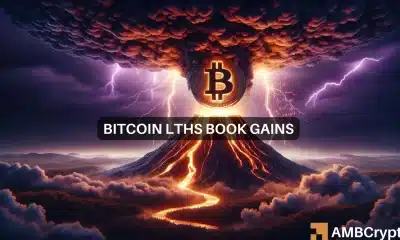Altcoin
BoA: Solana is primed to beat Ethereum and be the ‘Visa of digital asset ecosystem’
The Solana network’s shot in the spotlight might just be far from over as yet, especially now that the Bank of America has expressed future optimism for the top smart contract platform, even analogizing it as the “Visa of the digital asset ecosystem” after it managed to facilitate a large number of transactions over the past year.
In a note to investors on Tuesday shortly after hosting Solana Foundation member Lily Liu, the investment bank opined that Solana’s ease of use, scalability and low transaction fees had primed it to become and worthy contender of Ethereum, and might even beat it someday soon.
Solana poised for extraordinary growth
Penned by BOA analyst Alkesh Shah, the advisory also highlighted Solana’s impressive growth stats since it first launched in 2020. It has settled over 50 billion transactions, has more than $11 billion in total value locked, and has been used to mint more than 5.7 million non-fungible tokens (NFTs), according to Shah. This has made it optimum for carrying out micropayments and gaming transactions, claimed Shah adding,
“Solana prioritizes scalability, but a relatively less decentralized and secure blockchain has trade-offs, illustrated by several network performance issues since inception.”
Network outages and sustained attacks have in fact become commonplace on the network, especially now that it has slipped into the mainstream. It has faced multiple outages in the 6 months which have lasted hours and barred users from carrying out transactions. Often, these outages are a part of distributed denial of service (DDoS) attacks by hackers but are also caused due to network shortcomings.
Solana’s trump card
Its main competitor and top DeFi network Ethereum on the other hand suffers from its own set of issues related to scalability, which in fact has been a key factor behind the rise of alt-chains like Solana. Noting the same, Shah said,
“Ethereum prioritizes decentralization and security, but at the expense of scalability, which has led to periods of network congestion and transaction fees that are occasionally larger than the value of the transaction being sent.”
In this sense, Ethereum could become the blockchain for “high-value transactions and identity, storage and supply chain use cases,” while Solana grows itself as a settlement layer. Shah also opined that with time, however, rival blockchains will ultimately eat away Ethereum’s mart share in the face of greater use cases and accelerated adoption.
BOA had purported a similar outlook for Avalanche recently, which is another smart contract platform rising in the ranks of popularity, adoption, and total value locked. Another note to investors last month had argued that Avalanche’s ability to scale both securely and in a decentralized manner made it a viable alternative to Ethereum. This endorsement had helped its native token AVAX to take a bullish leap on the price charts as well.
Nevertheless, not everyone might agree with the bank. Recently Pantera Capital’s CIO Joey Krug had recently opined that while Ethereum might one day grow big enough to become a very viable part of the global financial system, its competitors lack security and internal decentralization, prohibiting them from becoming viable settlement layers.
